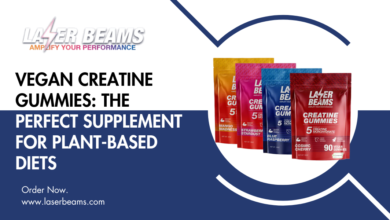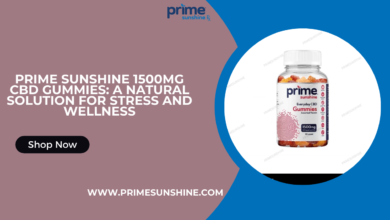How to Design Career Fair Banners That Stand Out
Design Career Fair Banners That Stand Out
Career fairs provide a unique opportunity for employers to showcase their brand and attract potential candidates. One of the most effective tools to capture attention and communicate your message is through well-designed banners. Here’s a comprehensive guide on how to design career fair banners that stand out and leave a lasting impression.
1. Define Your Goals
Why Setting Objectives Matters
Before designing your banner, it’s crucial to identify what you want to achieve. Having clear objectives will guide your design process and ensure that your banner effectively communicates your message.
Common Goals to Consider
- Brand Awareness: Increase recognition of your company name and logo.
- Recruitment: Highlight specific job openings or the qualities you seek in candidates.
- Engagement: Encourage attendees to visit your booth or participate in activities.
| Goal | Description |
| Brand Awareness | Promotes your company’s identity and values. |
| Recruitment | Attracts candidates to apply for open positions. |
| Engagement | Encourages booth visits and interactions. |
2. Choose the Right Dimensions
Why Size Matters
The size of your banner can significantly impact its visibility and effectiveness. Selecting the appropriate dimensions ensures your message is clear and easy to read from a distance.
Recommended Sizes
- Tabletop Banners: Typically 24” x 36” or 36” x 48” for smaller spaces.
- Pull-Up Banners: Commonly 33” x 79” or 33” x 81” for larger, freestanding displays.
- Backdrop Banners: Sizes can vary but often range from 6’ to 10’ wide, perfect for photo ops and larger displays.
| Banner Type | Recommended Size |
| Tabletop Banners | 24” x 36” or 36” x 48” |
| Pull-Up Banners | 33” x 79” or 33” x 81” |
| Backdrop Banners | 6’ to 10’ wide |
3. Use High-Quality Graphics
Why Visuals Are Key
High-quality graphics are essential for grabbing attention and conveying professionalism. Poor-quality images can detract from your brand’s credibility.
Best Practices
- Resolution: Ensure images are at least 300 DPI (dots per inch) for clear printing.
- Relevant Imagery: Use visuals that align with your industry and resonate with your target audience, such as photos of your team or products.
| Graphic Element | Description |
| High-Quality Images | Enhances professionalism and attracts attention. |
| Relevant Imagery | Connects with your audience and reinforces your message. |
4. Create a Clear Hierarchy of Information
Why Clarity Matters
Organizing information in a clear hierarchy helps attendees quickly grasp your key messages. Use size, color, and placement to guide the viewer’s eye.
Best Practices
- Main Headline: Use a large, bold font for your main message or company name.
- Supporting Text: Use smaller fonts for additional details, such as job openings or company values.
- Call to Action: Include a clear call to action (e.g., “Visit Us to Learn More!”) to encourage engagement.
| Information Element | Description |
| Main Headline | Grabs attention and communicates your primary message. |
| Supporting Text | Provides essential information without overwhelming the viewer. |
| Call to Action | Encourages attendees to engage with your booth. |
5. Choose an Eye-Catching Color Scheme
Why Color Choice Matters
Colors evoke emotions and can significantly impact how your banner is perceived. Selecting a harmonious color palette can enhance visibility and make your banner stand out.
Best Practices
- Brand Colors: Incorporate your brand’s colors for consistency and recognition.
- Contrast: Use contrasting colors for text and background to ensure readability from a distance.
| Color Element | Description |
| Brand Colors | Reinforces brand identity and promotes recognition. |
| Contrast | Ensures clarity and visibility of text and images. |
6. Use Readable Fonts
Why Typography Is Important
Choosing the right fonts can greatly affect the readability and overall aesthetic of your banner.
Best Practices
- Font Size: Ensure your text is large enough to be read from several feet away. Aim for a minimum of 24-point font for headlines and 18-point for body text.
- Limit Font Styles: Use no more than two different fonts to maintain a clean and cohesive look. Pair a bold font for headings with a simpler font for body text.
| Font Element | Description |
| Font Size | Ensures readability from a distance. |
| Limit Font Styles | Maintains a clean and professional appearance. |
7. Incorporate Your Logo Prominently
Why Your Logo Matters
Your logo is a crucial element of your brand identity. It should be prominently displayed to enhance brand recognition.
Best Practices
- Placement: Position your logo at the top of the banner, where it is easily visible.
- Size: Ensure your logo is large enough to be recognized from a distance but does not overwhelm other elements.
| Logo Element | Description |
| Prominent Placement | Enhances brand visibility and recognition. |
| Appropriate Size | Ensures clarity and maintains a balanced design. |
8. Include Contact Information
Why Contact Details Are Essential
Providing contact information ensures interested candidates can follow up after the event.
Best Practices
- Website and Social Media Links: Include your company website and social media handles.
- QR Codes: Add a QR code that links to your careers page or a digital brochure, making it easy for attendees to learn more.
| Contact Element | Description |
| Website and Social Media Links | Facilitates further engagement after the fair. |
| QR Codes | Provides easy access to more information. |
9. Test Your Design
Why Testing Is Crucial
Before finalizing your banner, testing can help identify any design flaws or readability issues.
Best Practices
- Mockups: Create digital mockups of your banner and test them in different settings to see how they perform.
- Feedback: Get input from colleagues or target audience members to gauge the effectiveness of your design.
| Testing Element | Description |
| Mockups | Helps visualize how the banner will look in real life. |
| Feedback | Gathers insights for improvement and refinement. |
10. Conclusion
Designing an effective career fair banner requires careful consideration of various elements, from color schemes to typography. By following these guidelines, you can create a banner that not only attracts attention but also effectively communicates your brand message and engages potential candidates.
Make Your Booth Stand Out
Consider these tips as you prepare your career fair banner. A well-designed banner will help you create a memorable presence and attract top talent to your organization!
Our beautifully packaged corporate gift boxes add an element of surprise and delight, making every gift unforgettable.

